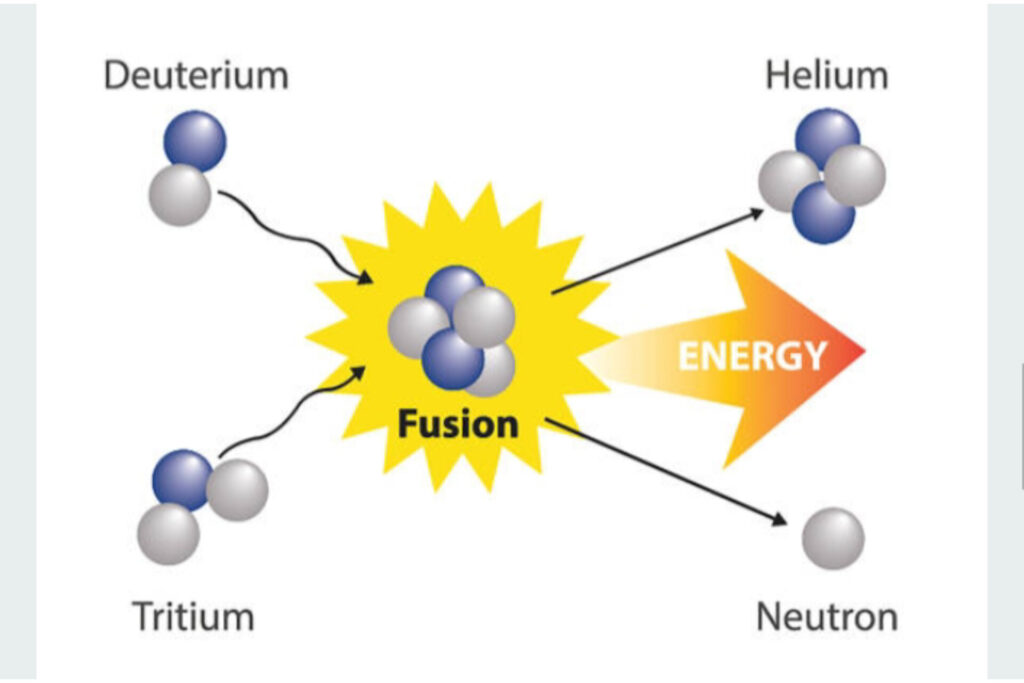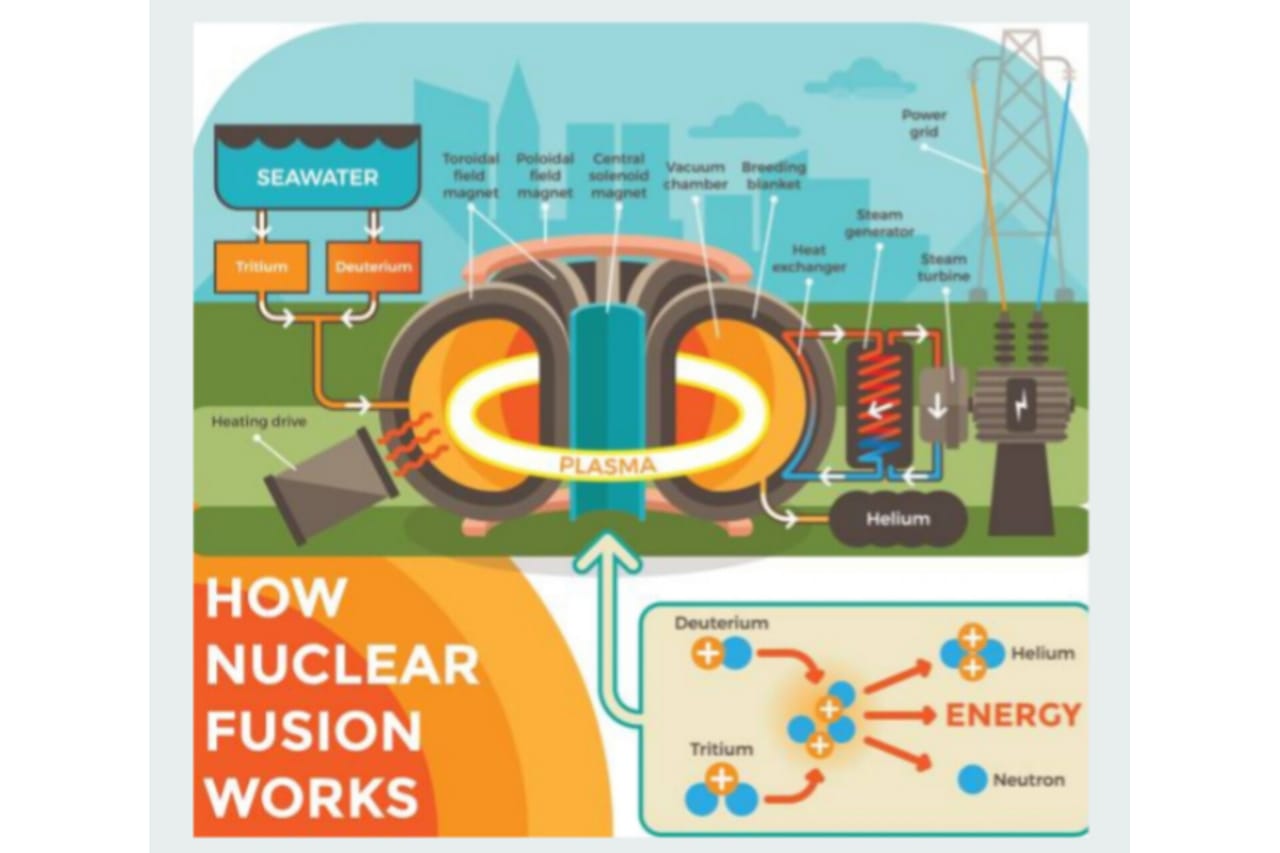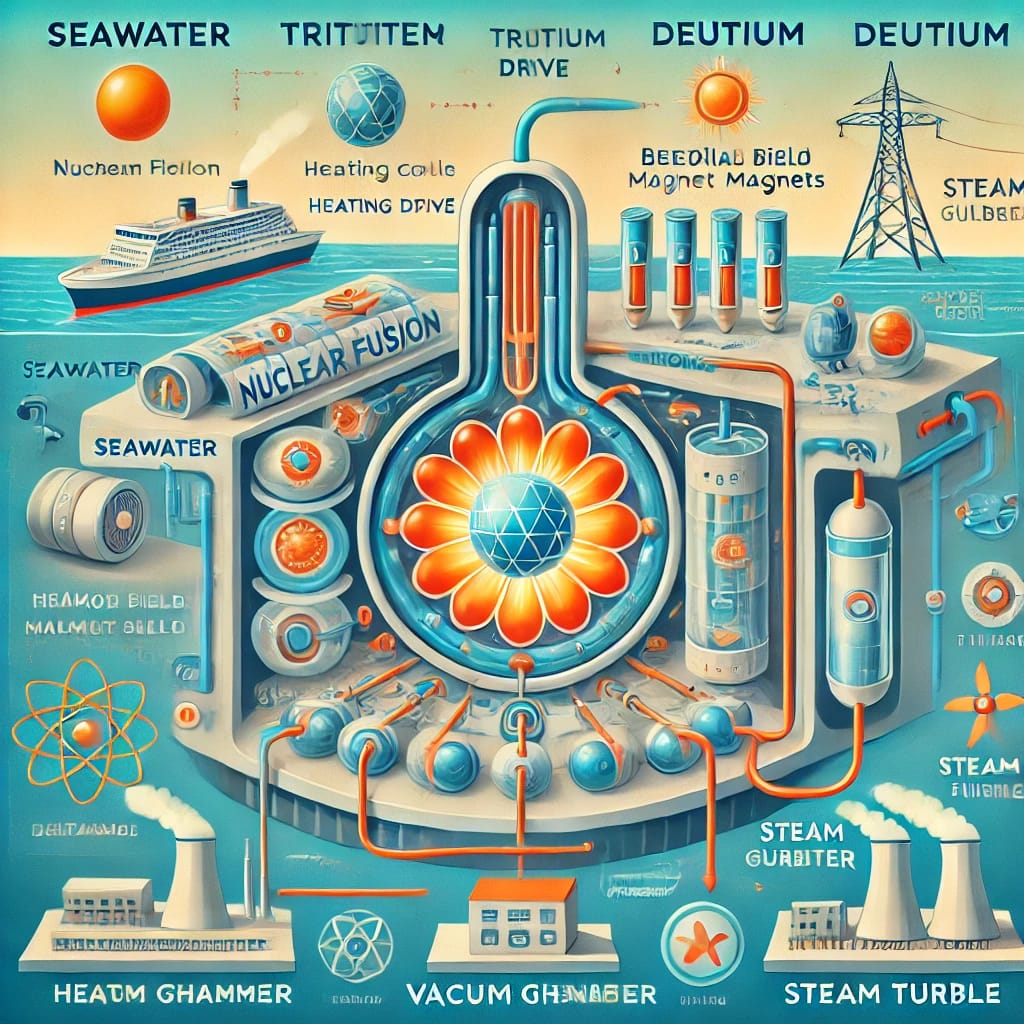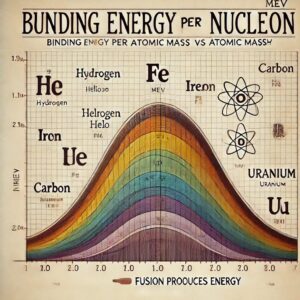Fusion Energy:” Unlocking the Power of the Stars”
Imagine harnessing the same power that fuels the Sun—an energy source capable of providing limitless, clean, and efficient energy for humanity. This is the promise of fusion energy, a technology that could revolutionize the way we power our world. For decades, scientists have been working to replicate the fusion process that powers stars, including our Sun, in controlled environments here on Earth. If successful, fusion could provide a solution to the world’s energy problems, offering a clean and sustainable source of power. Let’s dive into what fusion energy is, why it matters, and the road ahead in unlocking the power of the stars.
What Is Fusion Energy?
Fusion is the process by which two light atomic nuclei come together to form a heavier nucleus, releasing a tremendous amount of energy. This is the same process that powers stars like the Sun. In the Sun, hydrogen nuclei fuse to form helium under extreme pressure and temperature, releasing vast amounts of energy in the form of heat and light. This is why the Sun shines so brightly and why fusion has been identified as a potential source of boundless energy for humanity.
The most common fusion reaction that scientists are working to replicate on Earth involves isotopes of hydrogen—deuterium and tritium. When these two hydrogen isotopes fuse, they create helium and release energy. The challenge is replicating the conditions needed for fusion to happen: incredibly high temperatures (tens of millions of degrees) and pressure.
Why Fusion Energy Is a Game-Changer:
Fusion energy holds the key to solving some of the most pressing global challenges. Here are the key reasons why fusion energy has the potential to transform the future of energy production:
1. Abundant Fuel Supply:
Fusion relies on hydrogen, which is one of the most abundant elements in the universe. Deuterium, one of the key fuels for fusion, can be extracted from water, which is in virtually unlimited supply. Tritium, the other fuel needed for fusion, is rarer but can be generated within the fusion reactor itself. This means the fuel for fusion is abundant and accessible, making it a potential long-term solution to the world’s energy needs.

2. Clean Energy:
Unlike fossil fuels, fusion doesn’t produce harmful emissions or pollutants. There are no greenhouse gases like carbon dioxide being released into the atmosphere. Additionally, fusion does not create long-lasting radioactive waste like nuclear fission (the technology currently used in nuclear power plants). The by-products of fusion reactions are typically harmless—mainly just helium, an inert gas that is not harmful to the environment.
3. Safety:
Fusion is far safer than nuclear fission. In fission reactors, the process can potentially spiral out of control, leading to dangerous situations like meltdowns. Fusion, however, does not carry this risk. The reaction requires extremely precise conditions to maintain, and if something goes wrong, the reaction simply stops. This inherent safety makes fusion a promising energy source for the future.
4. High Energy Output:
The energy produced by fusion is immense. A small amount of fusion fuel can release a vast amount of energy, making it far more efficient than conventional energy sources like coal, natural gas, or even current nuclear fission reactors. This high energy density means that fusion could provide a significant amount of power from relatively small amounts of fuel.
The Challenges of Achieving Fusion Energy:
Despite its incredible potential, achieving practical fusion energy is no easy task. The conditions required for fusion are extreme, and replicating them on Earth has proven to be one of the greatest challenges in modern science. Here are the main obstacles that scientists face:
1. Extremely High Temperatures:
To get the nuclei of hydrogen atoms to overcome their natural repulsion (since they are both positively charged), temperatures need to reach tens of millions of degrees Celsius. This is hotter than the core of the Sun. At such high temperatures, the fuel becomes a plasma—a superheated state of matter that is hard to control and contain.
2. Magnetic Containment:
Plasma cannot touch the walls of the fusion reactor, as it would cool down and the reaction would cease. To prevent this, scientists use magnetic fields to contain and control the plasma. One of the most advanced approaches to magnetic confinement is the tokamak, a doughnut-shaped reactor that uses powerful magnets to keep the plasma in place. Scientists have made significant progress in developing fusion energy, which holds great promise for the future. One key method of achieving magnetic containment is through the use of tokamaks, advanced doughnut-shaped reactors that utilize powerful magnets to keep the plasma under control. This approach ensures that the plasma does not come into contact with the walls, allowing for sustained fusion reactions.
Scientists have made significant progress in developing fusion energy, which holds great promise for the future. One key method of achieving magnetic containment is through the use of tokamaks, advanced doughnut-shaped reactors that utilize powerful magnets to keep the plasma under control. This approach ensures that the plasma does not come into contact with the walls, allowing for sustained fusion reactions.
3. Energy Input vs. Energy Output:
To make fusion a practical source of energy, the reactor needs to produce more energy than it consumes. Currently, the energy needed to start and maintain the fusion reaction is greater than the energy the reaction produces. Reaching the point where fusion generates more energy than it requires is a critical milestone that still remains out of reach. However, advancements in technology are bringing us closer to this goal.
Key Fusion Energy Projects:
Although the path to commercial fusion energy is challenging, several projects and experiments around the world are making significant progress. Here are some of the most notable efforts:
1. ITER (International Thermonuclear Experimental Reactor):
Located in southern France, ITER is one of the largest and most ambitious fusion projects in the world. It aims to demonstrate that fusion can generate more energy than it consumes. When completed, ITER will be the first fusion reactor capable of producing a sustained fusion reaction. ITER’s goal is to produce 500 MW of power from just 50 MW of input power. The project is expected to achieve its first plasma operation in the coming years, marking a major step toward commercial fusion energy.
2. National Ignition Facility (NIF):
NIF, located in California, takes a different approach by using high-powered lasers to initiate fusion reactions. In 2022, NIF achieved a groundbreaking milestone by achieving a net energy gain, meaning the fusion reaction produced more energy than the lasers put in. This breakthrough has given scientists hope that laser fusion can be another viable path to achieving practical fusion energy.
3. Private Sector Initiatives:
Beyond government-funded projects, private companies are also pushing the boundaries of fusion energy. Companies like Commonwealth Fusion Systems, Helion Energy, and Tokamak Energy are developing their own fusion technologies, often with the goal of building smaller, more efficient reactors. These companies are attracting significant investment, and their progress is accelerating the pursuit of fusion energy.
Recent Breakthroughs in Fusion Research:
Recent years have seen remarkable progress in fusion energy research:
December 2022: The National Ignition Facility (NIF) in the U.S. achieved a major breakthrough, producing more fusion energy than was used to initiate the reaction.
ITER Project: The world’s largest fusion experiment, ITER (International Thermonuclear Experimental Reactor) in France, is working to demonstrate large-scale fusion power generation.
Private Sector Innovations: Companies like Commonwealth Fusion Systems, Helion Energy, and TAE Technologies are developing compact and efficient fusion reactors using novel designs.
When Will Fusion Energy Be Available?
While significant hurdles remain, experts predict that fusion energy could become commercially viable by the 2030s or 2040s. The rapid pace of technological advancements, increasing investment, and international collaboration are accelerating progress. Once achieved, fusion power could revolutionize the global energy landscape, providing a clean and sustainable solution for generations to come.
The Future of Fusion Energy:
While there is still much work to be done, the future of fusion energy is promising. Advances in technology, increased , investment, and international collaboration are all contributing to the accelerating pace of fusion research. In the coming decades, we could see fusion reactors that provide a virtually unlimited, clean, and safe source of energy. This could help us solve the world’s energy crisis, reduce our dependence on fossil fuels, and combat climate change done, the future of fusion energy is promising.
However, achieving commercial fusion energy requires continued breakthroughs in plasma physics, material science, and reactor engineering. The journey is long, but the destination—unlimited, clean, and safe energy—is worth the effort.
Conclusion:
Fusion energy holds the promise of a cleaner, more sustainable future by replicating the same process that powers the sun. Unlike fossil fuels and nuclear fission, fusion produces minimal radioactive waste and has an abundant fuel supply, primarily from hydrogen isotopes found in water. Although significant scientific and engineering challenges remain, breakthroughs in plasma confinement and magnetic containment have brought us closer to realizing its potential.
If successfully commercialized, fusion energy could revolutionize global power generation, providing an almost limitless source of energy while drastically reducing carbon emissions. Continued investment in research and international collaboration will be key to overcoming remaining hurdles. As humanity moves towards sustainable solutions, fusion stands as a beacon of hope—an energy source that could power the world for generations to come.
_______
This blog offers a clear and comprehensive look at fusion energy, explaining its importance and the challenges in a way that’s accessible to readers with little background in science. The future of fusion is bright, and its potential to transform energy production makes it an exciting field to watch.


